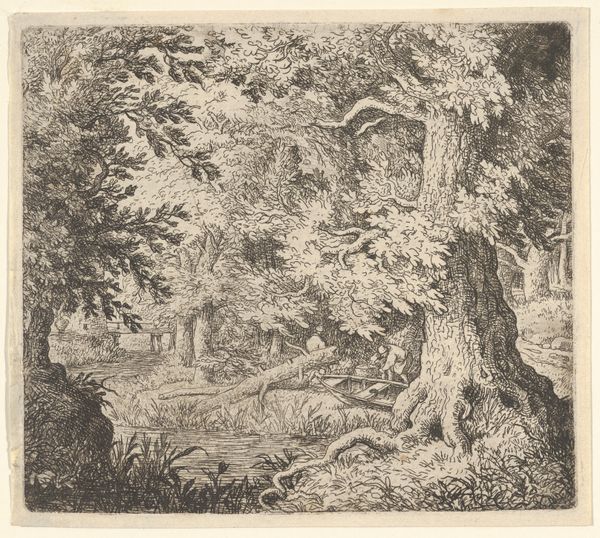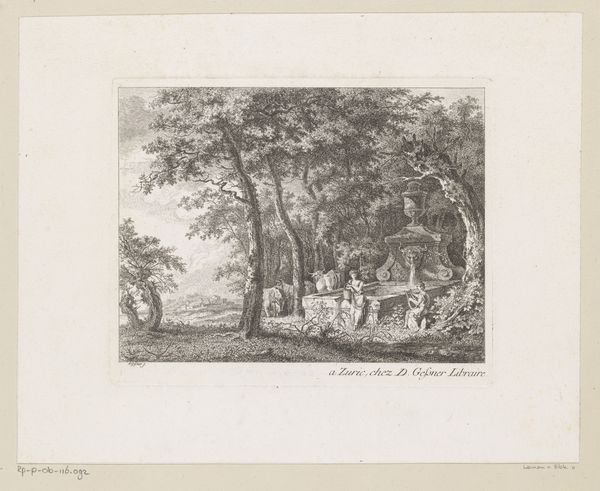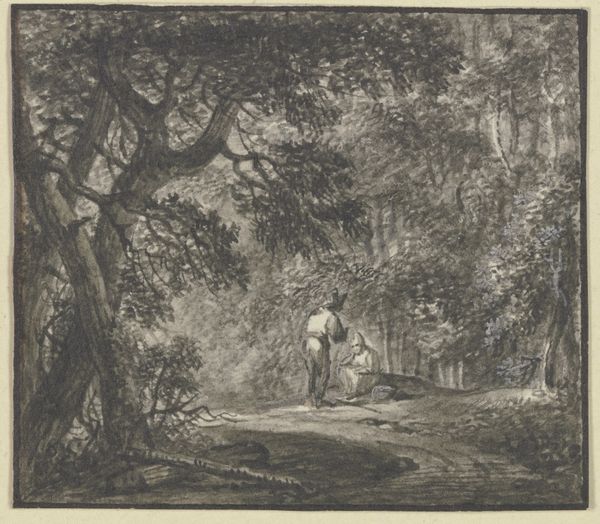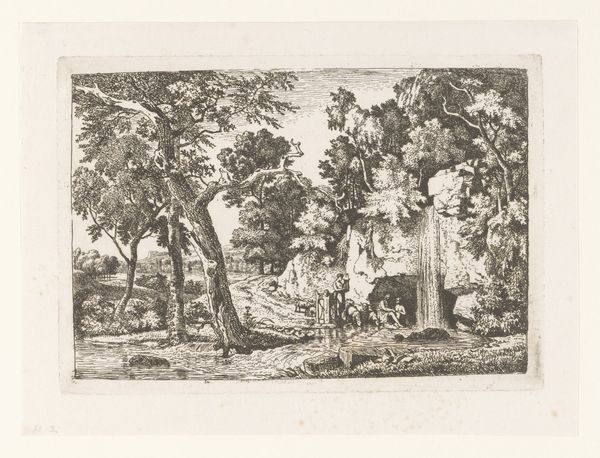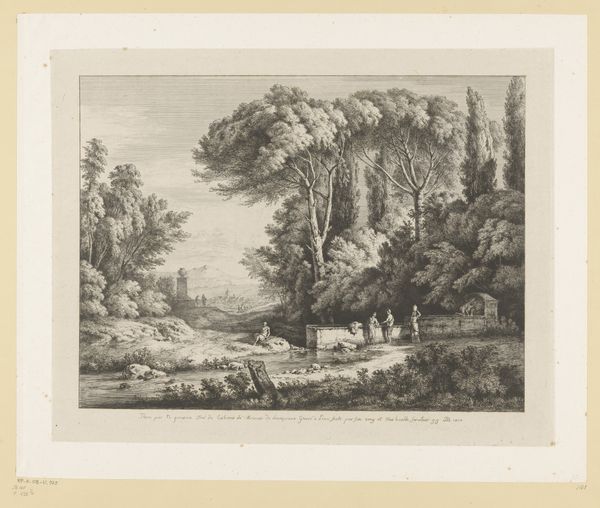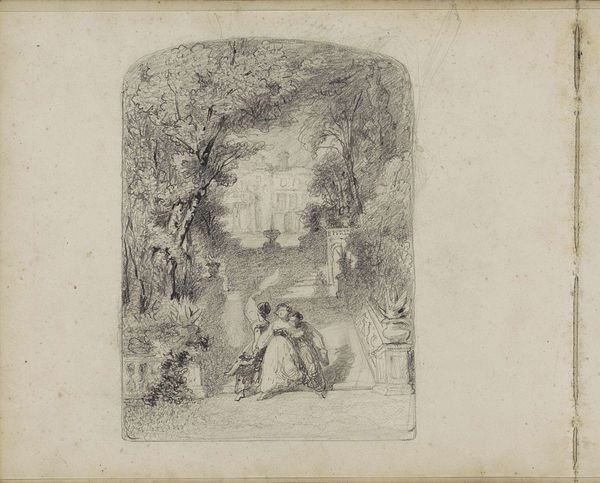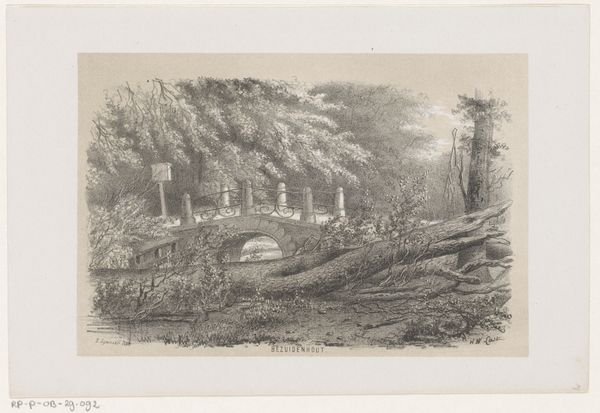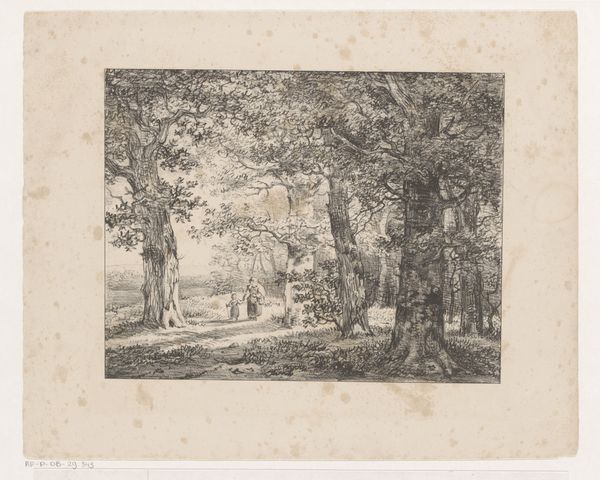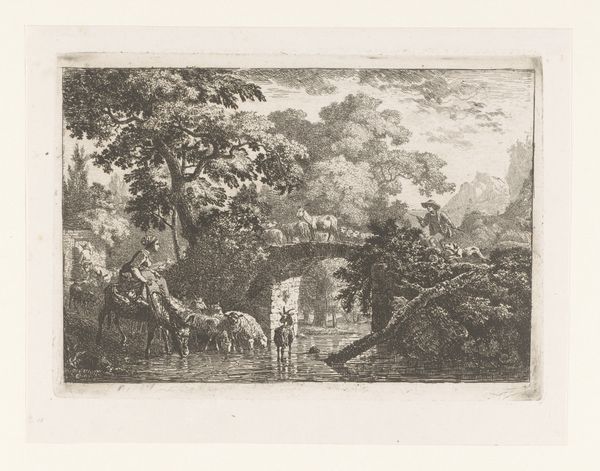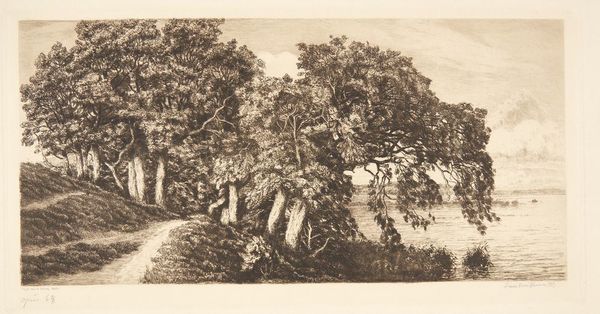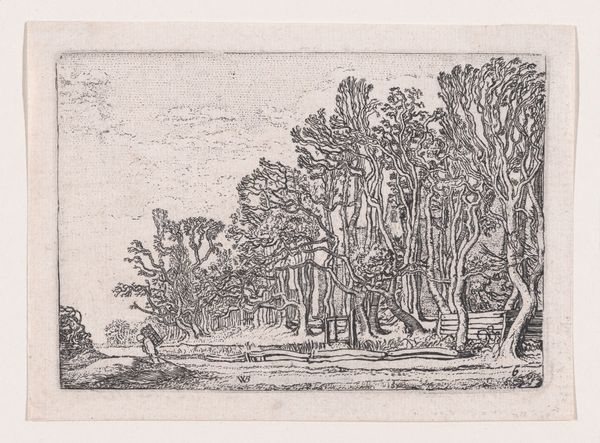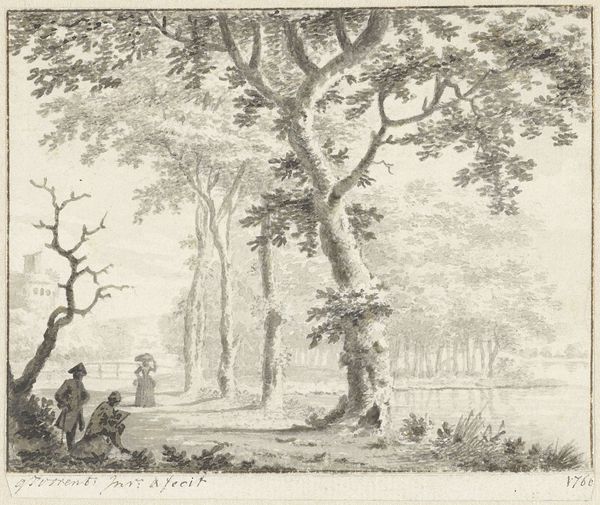
print, etching
# print
#
etching
#
landscape
#
genre-painting
Dimensions: height 203 mm, width 232 mm
Copyright: Rijks Museum: Open Domain
Curator: Right, let’s turn our attention to this print, "Grafdelver," by Eberhard Cornelis Rahms, dating back to 1862. He was quite fond of etching, wasn’t he? Editor: Etching, yes, and what immediately strikes me is the air of melancholy draped over the entire scene. Look at the figure digging – almost blending into the dark undertones. Curator: Melancholy suits it, doesn’t it? I get this very distinct feeling that it's less about literal grave-digging and more about something… introspective. It feels like digging for lost parts of yourself. Editor: Well, Rahms gives us quite a lot to analyze there! The lines of the etching itself show the labor that goes into art, not only the gravedigger, but also the labor of the artist! You see the repetitive lines building texture… a kind of earthy density. Curator: Absolutely! And consider the choice of placing him by that imposing tree. The weight of its age, its branches like knowing arms – a silent confidant, maybe? I wonder, too, if he thought of the societal implications. Digging graves then wasn’t as... detached as it is now. Editor: Precisely! There are lots of processes happening simultaneously here. You’ve got Rahms carefully working his acid bath on the metal plate, line by line, then someone else pulling each individual print… the entire process invites us to examine labor and craft of artistic prints in Dutch society. Curator: Yes, and don't forget that stream in the distance. And if you peer closely, there are figures clustered around what looks like a bridge! I almost get this feeling that even though we see someone dealing with the earth, life is just *over there*, going on regardless. Beautiful juxtaposition, if you ask me. Editor: Indeed. This makes me consider that these prints might not have been affordable for those depicted within them, such as grave-diggers and mourners. What does it mean to make an image accessible if those represented cannot afford to consume it? Curator: Food for thought, truly. It certainly lingers, doesn’t it? Editor: Yes, a fascinating lens through which to contemplate material life, and art’s representation of it.
Comments
No comments
Be the first to comment and join the conversation on the ultimate creative platform.
